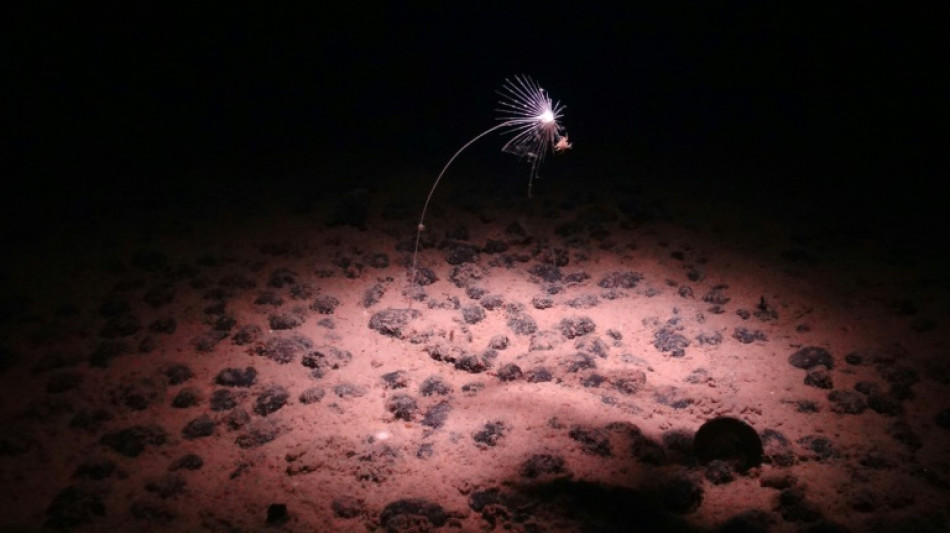
-
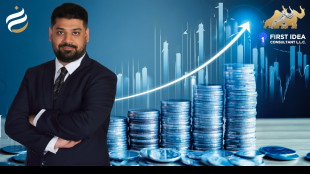 Scandic Trust Group strengthens sales network with First Idea Consultant
Scandic Trust Group strengthens sales network with First Idea Consultant
-
World leaders launch fund to save forests, get first $5 bn

-
 Villa edge Maccabi Tel Aviv in fraught Europa League match
Villa edge Maccabi Tel Aviv in fraught Europa League match
-
Protests as Villa beat Maccabi Tel Aviv under tight security

-
 US Supreme Court backs Trump admin's passport gender policy
US Supreme Court backs Trump admin's passport gender policy
-
Japan boss Jones backs Farrell to revive Ireland's fortunes

-
 MLB Padres name former reliever Stammen new manager
MLB Padres name former reliever Stammen new manager
-
'Grand Theft Auto VI' video game delayed again until Nov. 2026

-
 Martino returns as head coach of MLS Atlanta United
Martino returns as head coach of MLS Atlanta United
-
Hamilton dismisses Ferrari exit claims

-
 Musetti keeps ATP Finals hopes alive, joins Djokovic in Athens semis
Musetti keeps ATP Finals hopes alive, joins Djokovic in Athens semis
-
England boss Borthwick wants 'brilliant' Marcus Smith to shine against Fiji

-
 Piastri says he is confident he can recover and win drivers' title
Piastri says he is confident he can recover and win drivers' title
-
Verstappen admits he may need a bit of 'luck' to haul in rivals in title race

-
 Kazakhstan to join Abraham Accords as Trump pushes Mideast peace
Kazakhstan to join Abraham Accords as Trump pushes Mideast peace
-
'Moral failure': Leaders seek to rally world at Amazon climate talks

-
 UN Security Council votes to lift sanctions on Syrian president
UN Security Council votes to lift sanctions on Syrian president
-
Democratic giant, trailblazer and Trump foe Nancy Pelosi to retire

-
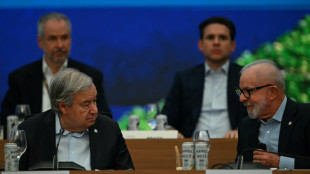 World leaders ditch ties at sweaty climate summit
World leaders ditch ties at sweaty climate summit
-
Dallas Cowboys' Marshawn Kneeland dies at 24

-
 Rally outside Rockstar against GTA studio's 'union busting'
Rally outside Rockstar against GTA studio's 'union busting'
-
McLaren boss says would rather lose title than issue team orders

-
 Sabalenka, top WTA stars urge Slams to revive 'stalled' negotiations
Sabalenka, top WTA stars urge Slams to revive 'stalled' negotiations
-
5 killed in Afghan-Pakistan border fire despite peace talks: official
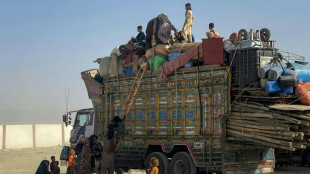
-
 Trump unveils deals to lower costs of some weight-loss drugs
Trump unveils deals to lower costs of some weight-loss drugs
-
Controversial Canadian ostrich cull order will go ahead

-
 Mexico's Sheinbaum to boost reporting of sexual abuse after being groped
Mexico's Sheinbaum to boost reporting of sexual abuse after being groped
-
Zuckerbergs put AI at heart of pledge to cure diseases

-
 Crypto giant Coinbase fined in Ireland for rule breaches
Crypto giant Coinbase fined in Ireland for rule breaches
-
Lawson relieved as he reveals FIA support following Mexican near-miss

-
 US set for travel chaos as flights cut due to govt shutdown
US set for travel chaos as flights cut due to govt shutdown
-
Sabalenka and Pegula book their spots in WTA Finals last four

-
 'Our brother-in-law': Arab world embraces New York's new mayor
'Our brother-in-law': Arab world embraces New York's new mayor
-
France boss Deschamps would prefer to 'avoid playing' on Paris attacks anniversary

-
 Pegula sweeps past Paolini to reach WTA Finals last four
Pegula sweeps past Paolini to reach WTA Finals last four
-
Bolivian ex-president Anez leaves prison after sentence annuled

-
 Stocks slide as investors weigh data, interest rate cuts
Stocks slide as investors weigh data, interest rate cuts
-
UN says 2025 to be among top three warmest years on record
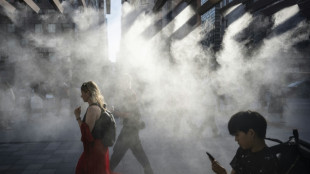
-
 Fleetwood and Lowry lift each other into Abu Dhabi lead
Fleetwood and Lowry lift each other into Abu Dhabi lead
-
Fleetwod and Lowry lift each other into Abu Dhabi lead

-
 New Zealand make changes after Barrett brothers' injuries as Scotland drop Van der Merwe
New Zealand make changes after Barrett brothers' injuries as Scotland drop Van der Merwe
-
Dallas Cowboys' Marshawn Kneeland dies at 24: franchise

-
 Pegula dispatches Paolini to keep WTA Finals semis bid alive
Pegula dispatches Paolini to keep WTA Finals semis bid alive
-
Dutch giants Ajax sack coach John Heitinga

-
 Kirchner on trial in Argentina's 'biggest ever' corruption case
Kirchner on trial in Argentina's 'biggest ever' corruption case
-
Amorim urges Man Utd to 'focus on future' after Ronaldo criticism

-
 US judge drops criminal charges against Boeing over 737 MAX 8 crashes
US judge drops criminal charges against Boeing over 737 MAX 8 crashes
-
World must face 'moral failure' of missing 1.5C: UN chief to COP30

-
 UK grandmother leaves Indonesia death row to return home
UK grandmother leaves Indonesia death row to return home
-
Garcia broken nose adds to Barca defensive worries


Mineral-rich nodules and the battle over mining the deep sea
They might look like pebbles strewn across the seafloor, but to the unique animals of the ocean deep, polymetallic nodules are a crucial habitat.
To the mining firms vying to extract them, on the other hand, they promise to be a "battery in a rock."
These nodules, found on the seafloor several kilometers below the surface, are to be the subject of the first submarine mining contract application, which the government of Nauru is expected to soon submit to the International Seabed Authority (ISA).
The contract is for Nori, Nauru Ocean Resources Inc, a subsidiary of Canada's The Metals Company.
This has caused concern among conservationists and scientists, who fear the severe impacts of mining a relatively untouched region of the planet that is rich in life, much of which remains unknown to science.
- Ancient -
Polymetallic nodules are most abundant in the Clarion-Clipperton Zone (CCZ) -- off the west coast of Mexico in the Pacific -- as well as in the central Indian Ocean and in the Peruvian Basin, according to the ISA.
The nodules were probably formed over millions of years.
They likely started off as solid fragments -- perhaps a shark tooth -- that sank down to the soft muddy seabed, then grew slowly through the accumulation of minerals present in the water in extremely low concentrations.
Today, they reach up to 20 centimeters (nearly 8 inches) in size: "metal pebbles," according to the French Research Institute for Exploitation of the Sea.
Adrian Glover, of Britain's Natural History Museum, thinks of them as like "potatoes" scattered on the seabed, roughly 15 to 20 kilograms (33 to 44 pounds) of them per square meter.
One of the reasons why the nodules have never been buried under the mud in the Pacific is because the sea is food poor, with fewer dead organisms -- known as "marine snow" -- drifting down to the depths to eventually become part of the seafloor mud.
Sedimentation rates in some areas of the CCZ are "almost zero", Glover said, amounting to just a centimeter per thousand years.
The nodules were first recovered from the Pacific deep in the 1870s by the Challenger expedition, which used thousands of meters of hemp rope, a steam-powered winch and plenty of manpower to dredge the westerly part of the CCZ.
"Straightaway they realized they were very interesting, it was actually one of the biggest discoveries of the voyage for them," said Glover.
But they were not considered to be a "resource," he added.
- 'Clean' power? -
Some 20 companies or research centers have been awarded exploration contracts by the ISA for these nodules. One of these is Nori, whose contract covers four zones totalling some 75,000 square kilometers (about 30,000 square miles) in the CCZ.
These nodules are mainly composed of manganese and iron, but they also contain strategic minerals such as cobalt, nickel and copper.
According to the ISA, the CCZ contains around 21 billion metric tons of nodules, which could correspond to a reserve of six billion metric tons of manganese, 270 million metric tons of nickel and 44 million metric tons of cobalt, exceeding the known totals of these three minerals on land.
Advocates of undersea mining point to their potential use for green technology, particularly for electric vehicles.
"A battery in a rock," says The Metals Company.
"Polymetallic nodules are the cleanest path toward electric vehicles."
But that is an argument rejected by environmental NGOs and some scientists.
This claim is "more public relations than scientific fact", Michael Norton, of the European Academies' Science Advisory Council, told AFP, calling it "rather misleading" to say that demand cannot be met without undersea minerals.
- Impact fears -
Unlike the other two types of subsea mining resources regulated by the ISA -- including the mining of hydrothermal vents -- nodules do not require digging or cutting.
In tests carried out at the end of 2022, Nori lowered a collector vehicle to a depth of 4.3 kilometers (about 2.7 miles).
It swallowed nodules and sediment and then separated them, transporting the nodules to the surface vessel via a giant pipe and discharging the sediment into the water.
Catherine Weller, global policy director at the conservation organization Fauna & Flora, said that while the nodules are lying on the seafloor, they cannot just be "plucked" individually.
The impacts on the wider ocean system of churning up sediment and releasing wastewater was "simply unknown," she added.
Weller said the unique composition of the nodules which attracts mining firms is also what makes them such a special habitat for the creatures that live in the ocean depths.
"So they themselves are a really important part of the deep sea system."
A.Mahlangu--AMWN
